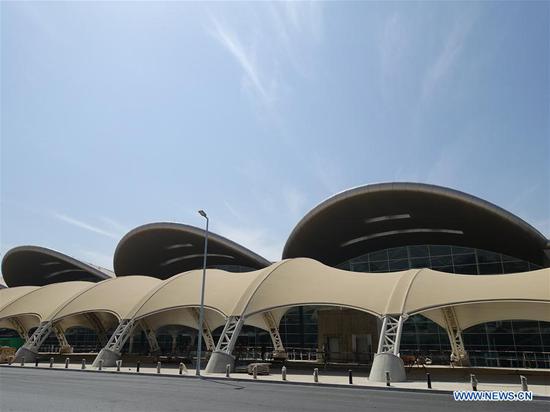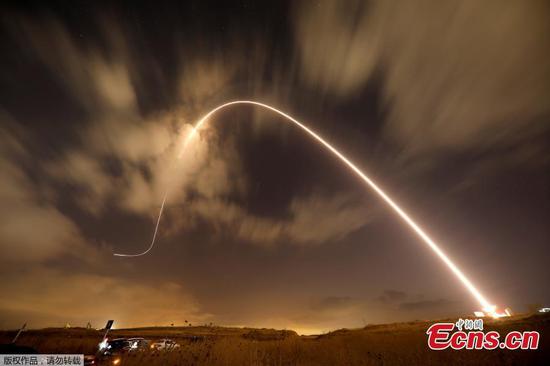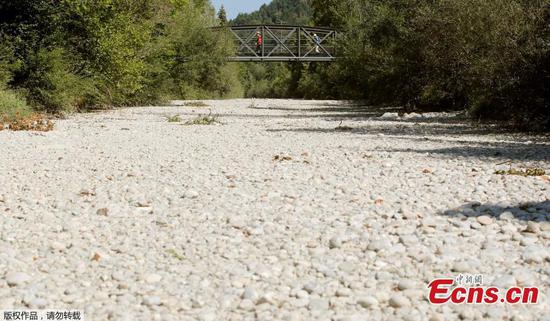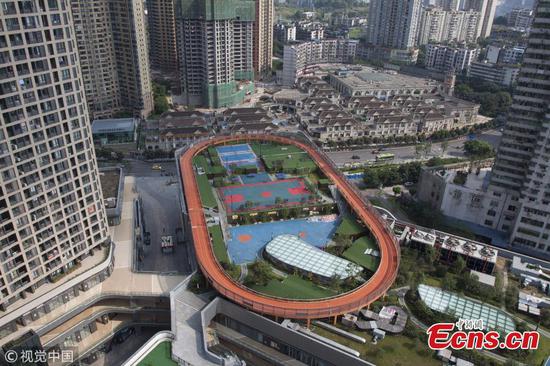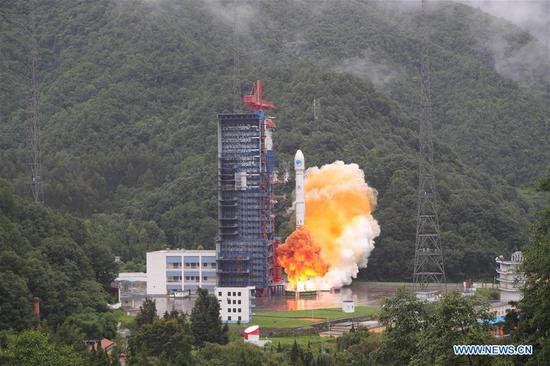
China sends twin satellites into space via the Long March-3B carrier rocket from Xichang Satellite Launch Center in Xichang, Southwest China's Sichuan province, July 29, 2018. (Photo/Xinhua)
Chinese satellite experts are designing a new type of spacecraft that will be capable of moving a de-orbiting satellite back into its intended orbit, thus extending its period of service.
The China Academy of Space Technology, part of China Aerospace Science and Technology Corp, said in a statement that its engineers are conducting research and development on the proposed spacecraft that would help bring satellites that have run short on fuel or experienced technical problems back to their designed trajectories.
Normally, a satellite needs to periodically use up a certain amount of fuel to maintain its preset orbit. When its fuel runs down, the satellite often deviates from its designed path.
The new spacecraft is engineered to connect to a target satellite via robotic arms and then provide attitude control assistance and push the satellite back into its proper orbit, according to the academy.
Once it finishes a life-extension task with a satellite, the service spacecraft will undock with the target and autonomously fly toward the next satellite that requires assistance.
The spacecraft's R&D will take about two years to complete. Once the vehicle enters service, it is expected to bring at least 10 years of extra operational time to multiple satellites, the academy said.
Hu Di, chief designer of the spacecraft, said that the vehicle will enjoy great commercial potential in the satellite industry.
"It will mainly be used to serve communications satellites operating in geostationary orbits about 36,000 kilometers above the ground because such satellites usually are very expensive and are important to people's daily lives," he explained. "If the target's instruments remain in good condition, it will be able to continue working in the orbit for many years."
According to Hu, there are about 150 communications satellites in service in geostationary orbits.
He said that designers plan to use the Long March 3B liquid-propellant carrier rocket to lift the spacecraft. The vehicle will have a weight of more than 5 metric tons and is expected to operate up to 15 years in space.
Wu Peixin, a senior editor at Aerospace Knowledge magazine, said that defunct satellites operating in geostationary orbits typically remain in space for long periods after becoming space debris, posing collision threats to other satellites.
Therefore, the in-orbit satellite-servicing spacecraft will be very helpful in reducing in-orbit hazards and reducing space debris, he said.
Internationally, the United States' Northrop Grumman Innovation Systems, successor of the space firm Orbital ATK, has developed a Mission Extension Vehicle to perform life-extension services to geosynchronous satellites and plans to make its first launch before year's end.













